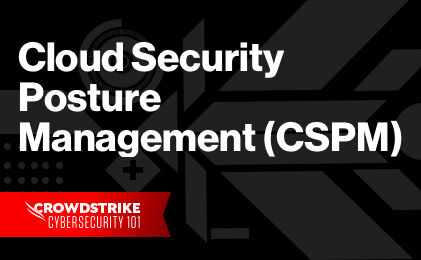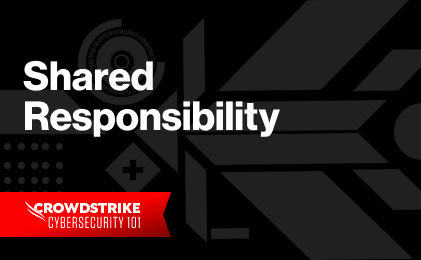An organization’s security posture represents the overall security status of its networks, systems, and procedures. It is a holistic snapshot of your security strengths and vulnerabilities across hardware, software, data, and user behavior.
Understanding and improving your security posture is important to safeguard your assets, maintain your business reputation, and build the trust of your customers. In this post, we’ll unpack the key components of a security posture and look at how to assess, strengthen, and monitor it.
Let’s begin by exploring the core concepts.
Security posture definition
Your organization’s security posture is the big-picture view of your cybersecurity strength and resilience — a measure of how prepared you are to defend against and respond to cyber threats. It considers the collective status of your organization’s security mechanisms, policies, and procedures.
To better understand your security posture, breaking it down into key components is helpful. Here are the main elements:
- Risk management: Identifying potential security risks and implementing strategies to mitigate them. Proper risk management ensures your ability to handle threats that might compromise your security.
- Incident response: How you respond to a security breach or attack. Incident response includes the plans and procedures in place to minimize the damage of an incident, recover, and then learn from it.
- Compliance and governance: How closely you adhere to established industry standards, regulations, and laws related to data security. Compliance and governance measures demonstrate accountability to regulatory bodies and help you earn trust in your industry.
- Security architecture: The design and implementation of security controls and measures to protect data and resources throughout your networks and systems.
- Employee training and awareness: Educating employees, ensuring they understand and follow security protocols.
Your organization’s security posture is not static — it constantly evolves alongside your organization, developments in technology, and emerging threats.
With this foundational understanding in place, let’s look at how to assess your organization’s security posture to identify areas for improvement.
Learn More
Most of the cloud breaches today are results of lack of visibility into the whole multi-cloud environment and errors involving misconfigurations. Learn how you can improve your cloud security posture and compliance by addressing the most common cloud security challenges in multiple and hybrid clouds.
Security posture assessment
A security posture assessment is a comprehensive evaluation that determines the effectiveness of your security measures, identifying vulnerabilities and pinpointing areas for improvement. The goal of an assessment is to gain a clear understanding of your organization's current level of security and resilience.
Regular assessments are critical because your cybersecurity landscape is always changing:
- New threats emerge
- Old vulnerabilities may be exploited
- Minor changes in your IT environment can open new potential risks
Regular assessments allow organizations to stay on top of these changes, addressing new risks before adversaries can exploit them.
Facilitating a security posture assessment involves several key components that are essential in helping you gain a complete picture of your organization’s security. These key components are as follows:
- Inventory of assets: Identifying and understanding what you need to protect. This includes all software, hardware, data, and any other assets that might be targeted in a cyberattack.
- Identification of vulnerabilities: Inspecting your inventory of assets closely to find their weaknesses. Depending on the asset to be inspected, you might use methods such as penetration testing, vulnerability scanning, or static analysis.
- Threat analysis: Identifying potential threats to your organization. This can range from generic threats that all organizations face to specific threats that are unique to your industry or organization.
- Risk assessment: Evaluating the potential impact of identified threats exploiting identified vulnerabilities. The result of a risk assessment will help your organization prioritize remediation efforts (for example, you would likely give high-risk, high-impact areas the highest priority).
- Recommendation for improvements: Compiling the findings of the security posture assessment into an actionable report. This report provides a roadmap for improving your overall security posture.
Now that we have a thorough understanding of what a security posture assessment entails, let's shift our focus to how to use an assessment’s findings to strengthen your security posture.

Customer Story:
Illinois State Treasurer
Download Now
Strengthening your security posture
Improving your security posture can be an ongoing process, and it will likely demand attention from many people in your organization, from business stakeholders to engineers. Let’s highlight the primary areas of focus when seeking to strengthen your security posture.
Policies, procedures, and controls
Robust policies, procedures, and controls serve as the security framework within which your organization operates. They offer clear guidance on how to handle various security scenarios. Security policies are the rules your organization will follow and enforce. Procedures are step-by-step instructions for dealing with common security situations, and controls are the measures put in place to minimize risk.
Your organization should regularly review and update these policies, procedures, and controls to ensure they remain effective in the face of evolving threats.
Employee training and awareness
Your human employees can also be significant vulnerabilities within your organization. Therefore, it is essential to ensure they are well versed in recognizing and handling potential security threats. Implement regular training programs to keep them updated on the latest cybersecurity trends and conduct awareness campaigns about security best practices. Proper employee training can help turn your employees from potential points of compromise into an active line of defense.
Technology
Using outdated or ineffective technology can weaken your security posture. Ensure your systems are up-to-date. To enhance your security, leverage modern technologies such as automation and AI. For example, AI-powered automated threat intelligence platforms can provide real-time information about existing and emerging threats.
Compliance and regulations
Complying with industry standards and regulations will help you avoid fines and penalties, but it goes much further than that. Doing so demonstrates your commitment to maintaining a strong security posture. This helps build trust with your stakeholders, partners, and customers. Familiarize yourself with relevant regulations in your industry, and use this as a rubric alongside your security posture assessment. From there, you can take action to ensure your organization's practices are in alignment.
After taking steps to strengthen your security posture, your organization should also have a strategy in place for continuous monitoring.
Learn More
A good defense security posture is still the best offense in protecting against breaches and vulnerability exposures. Organizations with weak, semi-scheduled vulnerability assessments and management programs are at a much higher risk than those relying on continuous vulnerability management processes and solutions. Learn more!
Blog: Defense is Still the Best Offense - Why Continuous Vulnerability Management is Essential
Monitoring your security posture
A robust security posture requires constant vigilance, routine maintenance, and periodic adjustments. Only by continuously monitoring your security posture and making adjustments can you be sure to stay ahead of ever-evolving cyber threats. Fortunately, you can leverage specific tools and strategies to facilitate this.
- Security information and event management (SIEM) tools collect and aggregate data from various sources within an organization, enabling real-time analysis of security alerts. By providing a centralized view of your IT environment, SIEM tools can help you uncover patterns or activities that could signify a security incident.
- Security orchestration, automation, and response (SOAR) tools collect and analyze security data and enable automated responses to low-level threats. By automating routine tasks, SOAR solutions allow your security team to focus on more complex threats. This increases your organization’s efficiency and reduces incident response time.
- Endpoint detection and response (EDR) tools continuously monitor endpoint devices, such as notebook computers and mobile phones, for signs of cyber threats. EDR tools assist in the quick detection and investigation of security incidents on these devices.
- Reporting on and communicating your security posture is critical to its continued effectiveness. This includes providing regular updates to key stakeholders and ensuring their awareness of the organization’s current state of security and any potential risks. Proper communication about your security posture will promote informed decision-making, especially related to the allocation of resources for security initiatives.
Conclusion
In today’s digitally interconnected landscape, organizations often expose broad attack surfaces while facing a wide range of cyber threats. Therefore, a comprehensive understanding of your security posture is absolutely essential. With regular and thorough security posture assessments, you can evaluate the effectiveness of your existing security measures, identify potential weaknesses, and implement strategies for improvement.
In this post, we looked at how to strengthen and monitor your organization’s security posture and touched on effective tools and strategies to help you stay ahead of the curve. For example, CrowdStrike Falcon® Insight XDR uses automation and AI tooling to analyze security data from endpoints, cloud workloads, networks, and email, and CrowdStrike Falcon® Fusion is an integrated SOAR framework built into the CrowdStrike Falcon® platform.





